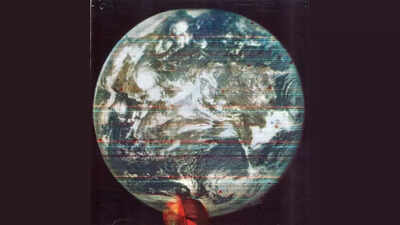The first full-colour photograph of Earth marked a turning point in how humanity understood its planet, shifting the view from fragmented satellite snapshots to a vivid global portrait. During the late 1960s, NASA was expanding its experimental satellite programme, exploring how colour imaging could enhance weather forecasting and planetary observation. This period saw rapid innovation in camera systems capable of separating and recombining light into natural colour, which allowed scientists to observe Earth in greater detail than ever before. According to a historical review published by NASA, the Applications Technology Satellite-3, launched in 1967, produced the world’s first true-colour full-disc image, setting new standards for remote sensing and transforming public awareness of Earth’s appearance.
Election Results 2025
How the ATS-3 satellite created the first natural-colour Earth image
Colour imaging from space required more than a sophisticated camera, it depended on overcoming the limitations of earlier monochrome systems that could capture only narrow bands of reflected light. The Multicolour Spin-Scan Cloudcover Camera aboard ATS-3 introduced a new scanning method, rotating steadily while the satellite remained geostationary. As the sensor recorded Earth line by line, it collected separate red, green and blue channels that could later be combined into a natural-colour view. Capturing these channels from 36 000 kilometres above the surface allowed researchers to see the entire illuminated hemisphere in a single image. The improved colour contrast helped scientists distinguish cloud structures, ocean surfaces and continental patterns with far greater clarity, providing a foundation for more advanced atmospheric studies.
How did NASA’s first colour Earth photograph change weather forecasting?
Meteorologists immediately recognised the value of full-colour imagery because it revealed subtle distinctions that black-and-white images could easily mask. Colour variation made it easier to identify different cloud layers, track the evolution of storms and understand the boundaries between land and water. The ATS-3 image helped researchers monitor cyclones and jet stream movements with a clarity that had not been possible before, supporting improvements in early storm-tracking models. The single, uninterrupted view from geostationary orbit meant scientists could observe weather systems developing across large regions without losing continuity. This image ultimately influenced the development of more advanced meteorological satellites that relied heavily on colour differentiation to interpret cloud density, moisture patterns and thermal contrasts.
How a single photograph changed how people saw the planet
The release of the first colour Earth image reached far beyond the scientific community, becoming an early symbol of environmental awareness. Seeing the planet suspended in darkness, with clouds, seas and continents rendered in natural colour, altered how many people understood Earth’s fragility and interconnected systems. The photograph appeared in classrooms, documentaries and newspapers, helping introduce the concept of a shared global environment. Scientists also used the image as a reference point when planning future remote-sensing missions, encouraging the development of instruments capable of capturing a wider range of colour and spectral information. In many ways, the ATS-3 photograph bridged science and culture, bringing space-based observation into everyday public consciousness.
How NASA’s first colour Earth image transformed satellite imaging
The success of the first colour image set a benchmark for future satellite missions, influencing how Earth-observing instruments were designed. As the demand for more detailed environmental data grew, satellites began incorporating multispectral scanners, higher-resolution cameras and sensors tailored to specific scientific goals such as vegetation mapping or ocean colour analysis. The line-scanning principle demonstrated by ATS-3 informed the engineering of later satellites that could produce global images at regular intervals. These continuous observations created long-term visual records that supported studies on climate change, land-use shifts and regional ecological transformations. Although ATS-3 offered only modest resolution by today’s standards, its method of combining colour channels remains foundational in remote-sensing technology.
Why was this colour image important for studying Earth as a whole?
The arrival of colour imagery encouraged scientists to study Earth as an interconnected system rather than separate components. Colour differences between land, ocean and cloud helped identify vegetation zones, dust plumes, snow cover and large-scale atmospheric patterns. These visual cues supported interdisciplinary research linking fields such as atmospheric science, oceanography and geophysics. The ability to view global processes in a single cohesive frame prompted new questions about climate behaviour, energy balance and environmental change. As imaging technologies progressed, this early colour perspective laid the groundwork for the emerging field of Earth system science, which continues to rely on satellite imagery to monitor long-term planetary trends.
Why does NASA’s first colour Earth image still matter today?
Although modern satellites capture images with significantly higher detail, the significance of NASA’s first colour Earth photograph endures. It remains a milestone in the history of observing our planet from space, showing how a single technological step can reshape scientific understanding. The methods used by the ATS-3 camera inspired later generations of imaging systems, even as they expanded to multispectral and hyperspectral analyses. The image also stands as a reminder of the value of global observation, providing a visual link between scientific discovery and public engagement. Its influence can still be seen in Earth-monitoring networks that track climate patterns, environmental change and natural hazards.Also Read | C/2025 V1: Could this mysterious comet reveal secrets of our solar system? Go to Source


